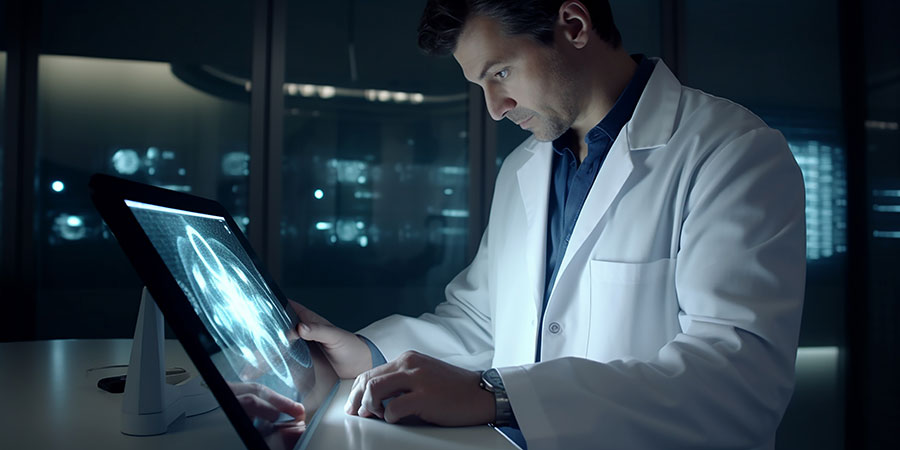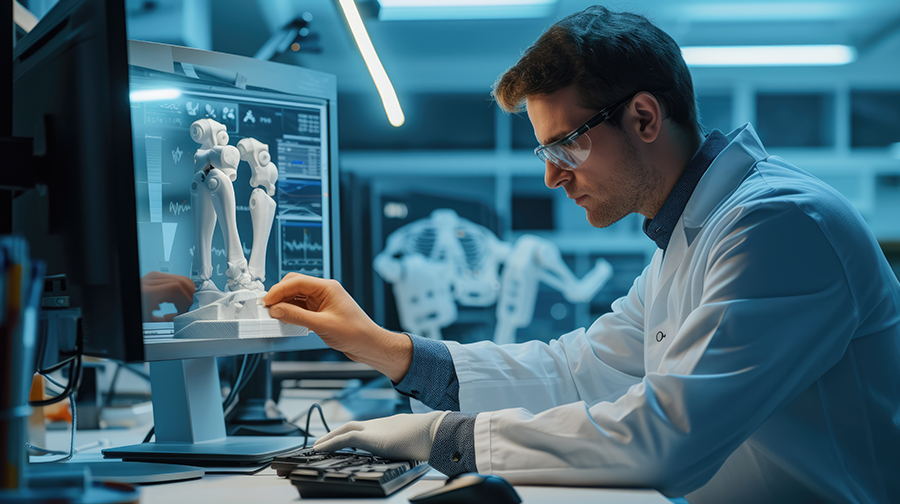What Are the Applications of Human Factors Engineering?
10-Mar-2025
Medical device design is at the forefront of ensuring patient safety, outcome enhancement, and general user satisfaction in today's increasingly complex healthcare environment. Human factors engineering is among the most significant fields fueling this innovation. This area is concerned with how individuals use technology and systems, and it has emerged as an essential aspect of medical device design. Through human factors engineering in the design, manufacturers can design devices that are not only effective but also simple to use, intuitive, and safe.
Understanding Human Factors Engineering
Human factors engineering is the art and science of designing systems, products, and environments that are compatible with human capability and limitations. It treats physical, mental, and emotional components of human performance to optimize use and reduce error. In human factors engineering design of medical devices, it translates to creating devices that can be utilized properly by health workers and safely used by patients even in demanding situations.
The human factors engineering design of medical devices cannot be overstated. Medical errors are the leading cause of patient harm, and most are the result of poorly designed devices that ignore human factors. By prioritizing human-centred design, manufacturers can decrease the risk of error, enhance patient outcomes, and increase the overall quality of care.
Applications of Human Factors Engineering in Medical Device Design
Improving Healthcare Providers' Usability
One of the simplest applications of human factors engineering design of medical devices is simpler to use for healthcare providers. Doctors, nurses, and technicians tend to operate in high-stress environments where one-second decisions can be life-or-death. The device should be easy to use, intuitive, and not overly complicated to train.
For instance, infusion pumps, which are employed to administer fluids and drugs to patients, need to be designed with user-friendly interfaces and controls. Human factors engineering makes the devices simple to program and track, minimizing dosing errors. Manufacturers can design devices that become part of practice smoothly by taking into account the requirements and workflows of healthcare providers.
Enhancing Patient Safety
Patient safety is of utmost concern for human factors engineering. Medical devices need to be designed in a way that reduces the likelihood of user error, which can have disastrous consequences. For example, a syringe with a bad design may result in inappropriate dosing, while a poorly designed screen of a glucose meter may result in inaccurate readings.
Human factors engineering addresses these issues by conducting rigorous usability testing and adopting end-user feedback. This identifies potential risks and design failures before releasing the product into the market. By placing safety first, manufacturers can give confidence to healthcare professionals and patients.
The medical devices are used by a population that ranges from highly competent surgeons to non-medically knowledgeable patients. Human factors engineering addresses the various capabilities and needs of the users. For instance, a device for home use by older patients must have large and clear displays and easy controls.
Just as medical devices in paediatrics must be designed with the particular needs of children in mind, so must devices that will be used to treat children. By taking into account the physical and cognitive abilities of different user groups, human factors engineering brings medical devices within reach and makes them effective for everyone.
Reducing Cognitive Load
Medical practitioners often have to do several things simultaneously, which results in cognitive overload. Human factors engineering addresses this load by making equipment easier to understand and operate. Clear labeling, understandable navigation, and automatic operations are all elements that can contribute to a simpler experience.
For instance, an anesthesia machine with a well-organized interface and voice notifications will allow anesthesiologists to concentrate on patient care instead of debugging the device. By decreasing cognitive load, human factors engineering enables clinicians to provide better care with fewer mistakes.
Enabling Training and Adoption
There will be uthe ptake of new medical technologies based on the ease with which the healthcare providers can master the skill of utilizing them. Human factors engineering is crucial in developing equipment that one can easily train on and seamlessly integrate into practice. They encompass simplicity and consistency as overriding principles.
For example, a new surgical device must be designed to be compatible with devices that are already practised to restrict learning. With human factors engineering incorporated into the design process, manufacturers will be able to speed up technology implementation and enhance patient outcomes.
Offering Regulatory Compliance
Regulatory bodies, like the U.S. Food and Drug Administration (FDA), put a lot of emphasis on human factors engineering while designing medical devices. The firms need to prove that their devices have been designed with the user in mind and that risks have been reduced.
Human factors engineering assists firms in complying with these regulatory needs through the establishment of a formalized method for usability testing and risk assessment. Following these guidelines ensures that manufacturers have safer and more effective devices to offer the marketplace.
The Future of Human Factors Engineering in Medical Device Design
In the constantly changing world of medicine, the user interface of medical devices is at the forefront of making healthcare safe, improving performance, and offering a better user experience as a whole. Among the most critical areas driving this progress is human factors engineering. Human factors engineering is the study that revolves around the interface between individuals and systems and technology and has become an essential part of medical device design. By integrating human factors engineering into the design process, manufacturers can develop devices that not only operate optimally but also in a user-friendly manner, in terms of being easy to operate, intuitive, and safe.
Understanding Human Factors Engineering
Human factors engineering is the art and science of developing systems, products, and environments in alignment with users' strengths and weaknesses. It takes into consideration physical, cognitive, and emotional human behaviour factors in a bid to have the best usability as well as reduce the potential for errors. This involves, for instance, the development of equipment to be efficiently used by medical staff and safely used by patients even during stressful situations.
The role of human factors engineering in medical device design cannot be overemphasized. Medical errors are a major cause of patient harm, and almost all are caused by poorly designed devices that do not take human factors into consideration. Manufacturers can lower the risk of errors, improve patient outcomes, and improve the overall quality of care by applying human-centred design.
Applications of Human Factors Engineering in Medical Device Design
Improving Usability for Healthcare Professionals
One of the major applications of human factors engineering is improving medical devices to make them more usable for healthcare professionals. Physicians, nurses, and technicians are professionals who work in high-stress environments where decision-making needs to be done quickly, often in life-or-death situations. An appropriate device should be intuitive, easy to use, and not need much training.
For instance, infusion pumps, which administer drugs and fluids to patients, need to be designed with clear interfaces and simple controls. Human factors engineering guarantees that the devices are simple to program and monitor, minimizing the risk of dosing errors. By taking into account the requirements and procedures of healthcare professionals, manufacturers can develop devices that fit well into the clinical workflow.
Enhancing Patient Safety
Patient safety takes precedence over human factors engineering. Devices need to be designed such that they limit the likelihood of user error, which can prove to be damaging. For example, a misdesigned syringe can cause incorrect dosing, while a feature of inaccessibility of a glucose monitor can result in incorrect readings.
Human factors engineering does this via intensive usability testing and the imposition of end-user feedback. By doing this, issues and potential risks may be identified before being released into the market. From its focus on safety, the manufacturers will have the ability to gain the trust of both healthcare providers and patients.
Designing for Diverse User Populations
Medical devices are operated by a very broad group of users, ranging from highly skilled surgeons to patients who are not medically trained. Human factors engineering considers the varying capabilities and requirements of these users. For instance, a device to be used at home by elderly patients should have large, clear displays and uncomplicated controls.
In the same way, pediatric devices to be used for care must be designed to address the specific needs of children. About the physical and cognitive capabilities of various classes of users, human factors engineering makes medical devices available and useful for all individuals.
Decreasing Cognitive Load
Medical staff typically have several things to do simultaneously, which can lead to mental overload. Human factors engineering aims to reduce this by designing equipment that is easy to understand and operate. Simple labeling, intuitive navigation, and automatic functions can all contribute to a more intuitive experience.
For instance, an orderly anaesthesia machine and sound warning will allow anesthesiologists to concentrate on patient treatment instead of device maintenance. Decreasing mental load, human factors engineering allows healthcare workers to provide superior care with less error.
Enabling Training and Adoption
The use of new medical technology is greatly dependent on how easily healthcare professionals can learn and master its use. Human factors engineering is important in the design of devices to be easily trainable and adoptable into practice. Clarity and consistency are important principles in this context.
For example, a new surgical instrument must be designed to be compatible with the existing toolkit to reduce learning time. Incorporating human factors engineering in the design process, manufacturers enable faster adoption of new technologies and better outcomes for patients.
Ensuring Regulatory Compliance
Regulatory bodies, including the U.S. Food and Drug Administration (FDA), are very interested in human factors engineering of medical device design. The firm must prove that its devices have been designed with consideration for the end-user and that hazards have been reduced to a minimum.
Human factors engineering enables the firms to satisfy these regulatory specifications through a formal process of usability testing and control of risk. Complying with these guidelines enables manufacturers to bring in more effective and secure devices.
The Future of Human Factors Engineering in Medical Device Design
With continuing advances in technology, human factors engineering's contribution to medical device design will only grow stronger. From surgical robots to patient monitors, next-generation medical devices will need an advanced understanding of people and their behaviours. By integrating human factors engineering, companies can design devices that satisfy clinical demands yet touch and enrich patients' lives.
In a word, human factors engineering is the foundation of today's medical device design. Its applications span usability, safety, accessibility, and regulatory compliance, making it a vital discipline for anyone working in healthcare innovation. By putting the human element first, we can create a future where medical devices are not just sophisticated technology but also deeply responsive to the individuals who will be employing them. , the position of human factors engineering in the creation of medical devices will grow in significance. From wrist-worn health monitors to robot-assisted surgical instruments, medical devices of the future will need to know about human behaviour and needs in profound ways. By adopting human factors engineering, manufacturers can design products that not only satisfy clinical requirements but also empower patients and caregivers and enhance lives.
Overall, human factors engineering is a foundation of contemporary medical device design. Its applications range from usability, safety, and accessibility to regulatory compliance, and therefore, it's a vital discipline for all those who are engaged in healthcare innovation. By focusing on the human factor, we can create a future where medical devices are technologically sophisticated but fundamentally human-centred.
Recent Posts

Impact of 2024 HCPCS Updates on Healthcare Providers
16-Aug-2024
The 2024 Guide to Employee Motivation
21-Aug-2024
7 Ways to Improve Performance Management at Your Company
23-Aug-2024
Choosing the Best HR Tool for Education: 5 Things You Need to Know
28-Aug-2024
Payroll Records: A Guide to Retention and Disposal
04-Sep-2024
AI Limitations Why Certain Jobs Will Always Require a Human Touch
09-Sep-2024
How the New HIPAA Rules Impact Reproductive Health Care Providers
13-Sep-2024
Best Strategies to Manage Toxic Employees and Boost Team Morale
20-Sep-2024
Top 7 Common Coding Errors That Trigger Audits and How to Prevent Them
26-Sep-2024
How OSHA is Involved in Mandating Protections for Employees
14-Oct-2024
FDA Software Classification Guidance
22-Oct-2024
Stay Ahead of FDA Inspections: Best Practices for Managing Form 483 Citations and Warning Letters
24-Oct-2024
Best Practices to Reduce Validation Effort and Costs
06-Nov-2024
Best Practices for Medical Device Software Validation and Risk Management
14-Nov-2024
Training Strategies to Comply with EEOC New Harassment Standards
14-Nov-2024
Guideline On Computerized Systems and Electronic Data in Clinical Trials
17-Dec-2024
What is Human Factor Engineering in Medical Terms?
17-Dec-2024
What is the Objective of Supervisor Training?
24-Dec-2024



